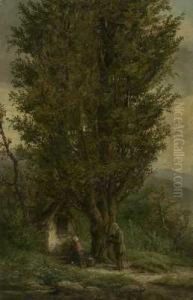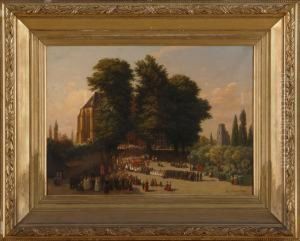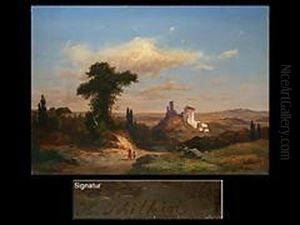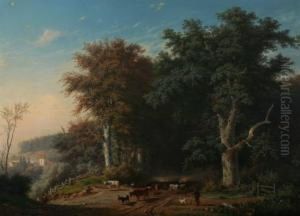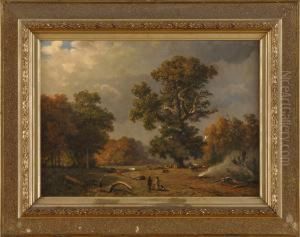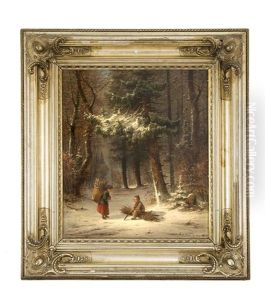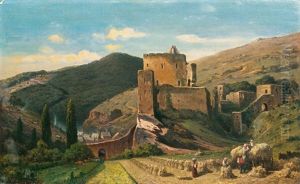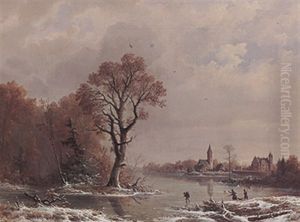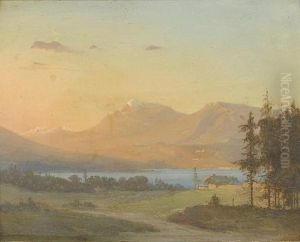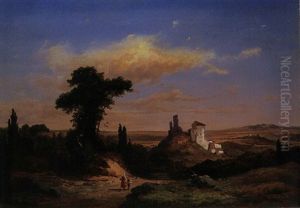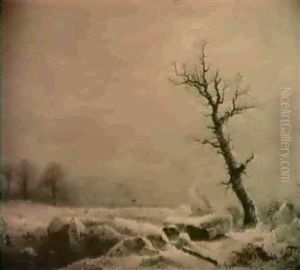Heinrich Schilking Paintings
Heinrich Schilking was a German portrait and genre painter, born in 1815 in Münster, Germany, and passed away in 1895. Schilking's artistic journey began at an early age, showing a profound interest in painting and drawing that led him to pursue a formal education in the arts. He studied at the Academy of Fine Arts in Düsseldorf, a leading art school in Germany that played a crucial role in shaping the artistic styles and careers of many prominent artists in the 19th century. Under the guidance of renowned teachers, Schilking honed his skills, particularly in portraiture and genre painting, genres that were highly popular and respected during his time.
Over the years, Schilking developed a distinctive style characterized by its meticulous attention to detail, vibrant color palette, and the ability to capture the essence of his subjects. His portraits were particularly noted for their realism, depth, and the way they reflected the personality and status of the sitters. Schilking's genre works, on the other hand, often depicted scenes from everyday life, offering insights into the customs, traditions, and social dynamics of his era. These paintings were celebrated for their narrative quality, inviting viewers to delve into the stories behind the scenes and characters portrayed.
Throughout his career, Heinrich Schilking enjoyed considerable success and recognition. He exhibited his works at various art shows and galleries, gaining acclaim not only in Germany but also in other parts of Europe. His paintings found their way into the collections of notable patrons, contributing to his reputation as a skilled and sought-after artist of his time.
Despite his success, Schilking remained dedicated to his craft, continuously exploring new techniques and subjects. His commitment to art was not just limited to his own practice but extended to nurturing the next generation of artists, as he occasionally taught and shared his knowledge and experiences.
Today, Heinrich Schilking's legacy lives on through his paintings, which continue to be appreciated for their beauty, skill, and historical value. While he may not be as widely recognized as some of his contemporaries, Schilking's contribution to the art world, particularly in the realms of portraiture and genre painting, remains significant. His works are preserved in several museums and private collections, testament to the enduring appeal and importance of his artistic achievements.
